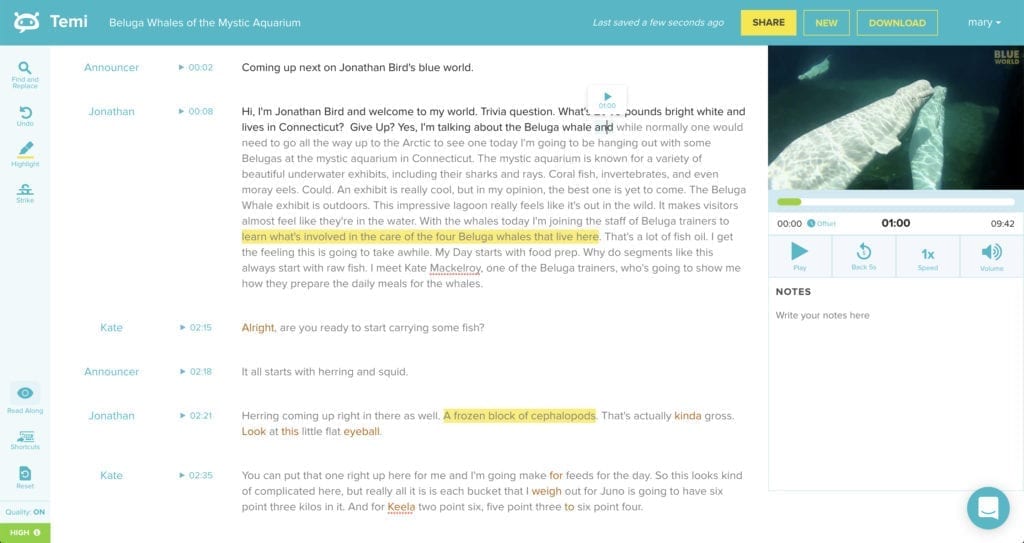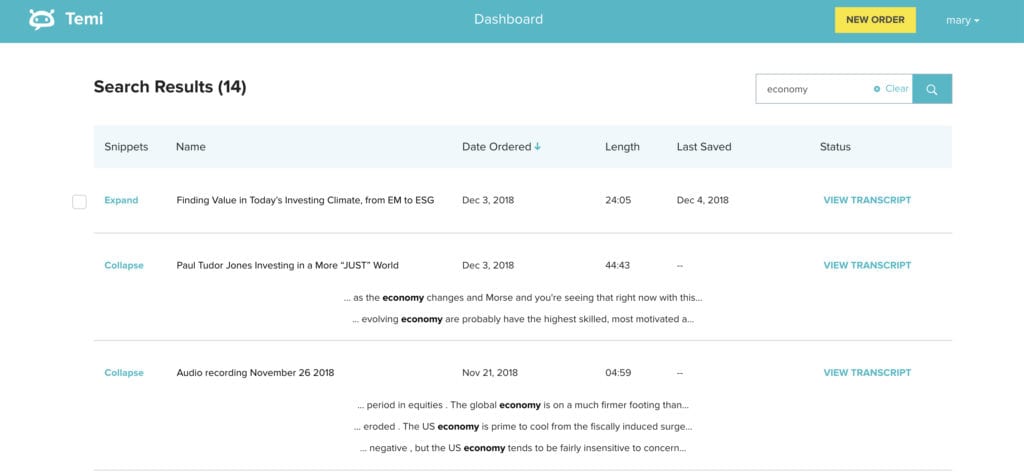|
Getting your Trinity Audio player ready...
|
Launched in July 2017, Temi is an automated speech recognition engine that rapidly transcribes audio to text. Developed by a team of
What business problem is your company addressing?
- Publishers are strapped for time. As consumers have transitioned to obtaining information online, news outlets find themselves stretched thin to produce more content in less time as they struggle to meet growing demands. Despite the expectation to produce more, one process that remains necessary yet tedious is transcribing interviews. Journalists spend, on average, 6 hours a week transcribing audio. Over the course of a single year, that adds up to 2 lost business months. Outsourcing to a third party is an option, but waiting 24-48 hours for a transcript can mean a story gets scooped up by another outlet. How are publishers to stay ahead of the news cycle when the age-old process of transcription is crucial for producing high-quality content?
- The cost of outsourcing. Many publishers choose to transcribe files themselves to save costs. Outsourcing transcription to a human can be costly and usually entails a 24-hour wait period unless the user is willing to pay an even higher premium. The cost is often not within budget, nor do the time frames accommodate tight deadlines.
- Confidentiality: Journalists often conduct interviews that need to remain confidential until a story runs. Outsourcing transcription work to others runs the risk of information falling in the wrong hands.
What is your core product addressing this problem?
Temi transcribes audio to text in just minutes. There are a few ways to use the platform. Temi’s website is a one-stop-shop for all the functions we offer. Users can upload an audio or video file or paste a link in the website. Temi then returns the transcript within minutes. Once the transcript is available, Temi’s editor tool can be used to fine-tune the transcript, follow along with the original recording, highlight important parts, and more.

Temi also has a mobile app (for Apple and Android users) that allows users to record, store and submit audio for immediate transcription right in the app. For companies integrating speech recognition into their workflow, Temi has an API to seamlessly submit media and receive transcripts.
Temi addresses publisher challenges with:
- Time savings. Temi saves media professionals an immense amount of time when it comes to transcribing interviews. Users gain a competitive advantage in being the first to get a story out. AI transcription makes content searchable, so users can quickly find quotable snippets instead of having to listen through an entire audio file to pull a quote. Temi is also very useful in producing first drafts of content and even saving story ideas. Users can pull up the app and start recording story ideas, to-do lists, and first drafts of content simply by talking out loud. The average person speaks at a rate of 150 wpm, whereas the average person types 40 wpm. That means a five-minute audio recording is around 750 words. The time savings are simply life-changing.
- Cost. Temi is very affordable at $0.10/minute. With the time savings at hand, the low cost is easily justifiable for any publisher.
- Confidentiality. Journalists often conduct interviews that need to remain confidential until a story runs. With Temi, confidential interviews remain so.

Can you give some examples of publishers successfully using your solution?
Early on, the Temi team conducted field research with reporters and journalists. At the time, many of them were transcribing interviews themselves. The initial feedback was overwhelming. Some of the first users said: “Temi changed how I work” and that it “Vastly improved the quality of my life as a professional writer.” They went from spending a half-day to full day transcribing interviews to pushing a button at the start of an interview, hitting submit after, and having a transcript of it by the time they were back at their desks.
What are other people doing in the space and why?
Machine learning and speech recognition technology have seen tremendous improvements over the last few years. These advances brought on a wave of new service offerings. Temi is a leader in the automated speech-to-text space. Two key differentiating factors are:
- Accuracy. Temi is the most accurate automated transcription service on the market today.
- Cost. Unlike others, we don’t charge users on a subscription basis. Users are only charged for the minutes get transcribed, so no one pays for unused minutes.
How do you view the future?
We plan to integrate Temi with Rev.com in the next year. We’re building a unified platform for users to record audio, store files, request transcripts (via human or machine), view and edit those transcripts, and so much more. We also plan to make improvements to our mobile apps to make it easier for users to record on-the-go from their mobile devices. And we plan to introduce custom vocabulary to Temi, so users can call out complex words and proper nouns that Temi can expect to transcribe from the recording.
Anything else we should know?
Yes, please see the chart below for Temi’s average turnaround time based on file length.
| Length of file (in minutes) | Turn around time (in minutes) |
| 0-30 | 1-5 |
| 30-60 | 5-7 |
| 60-90 | 8-9 |
| 90-120 | 10-13 |
I would also like to point out that Temi is a great collaborative tool for teams. Often times, one individual may conduct the interview and get it transcribed via Temi, then share the transcript with others on the team, who can read through and view highlights. Others working on a joint project can easily hop in and pull information needed. They can also collaborate on editing the transcript. It’s a user-friendly tool that teams use in regular workflows. You can view a sample transcript here.
Thank you.


